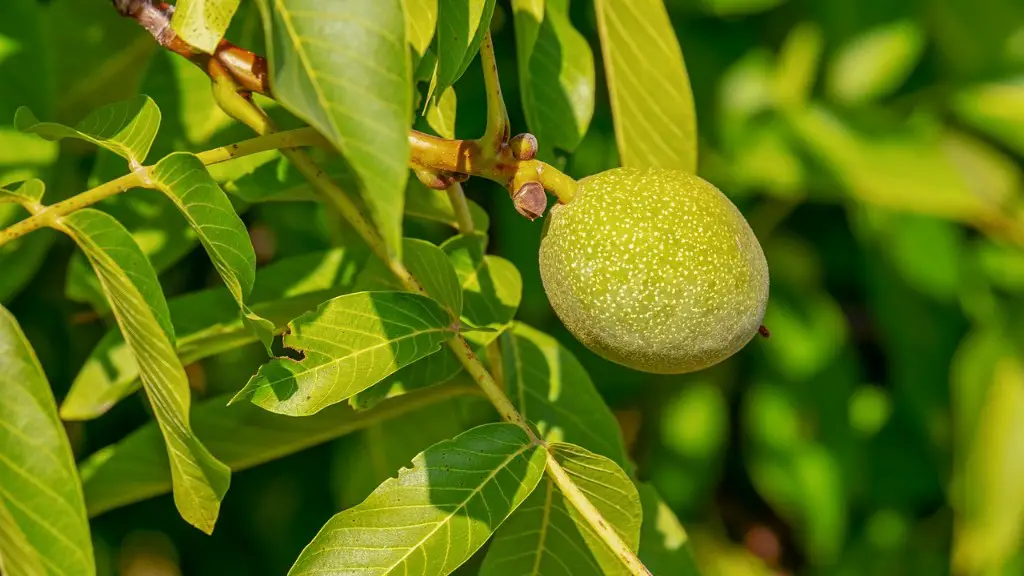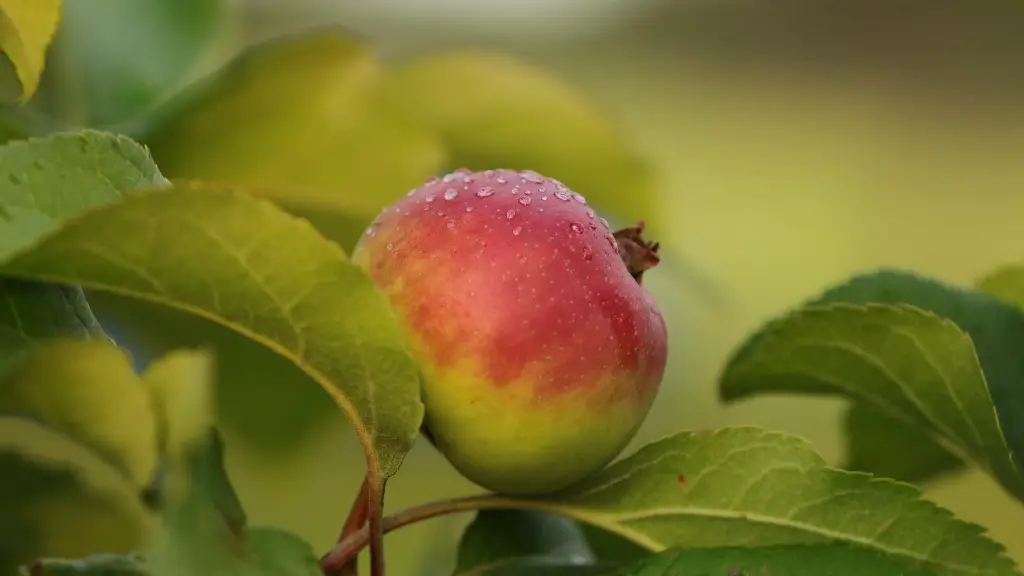It is a common question whether lemon trees can regrow their leaves after they have been shed. The answer is that it is possible for the lemon tree to regrow its leaves, but typically young lemon trees are more successful at doing so than mature trees. The main reason for this is that young trees typically have stronger and more established root systems that better support the growth of new leaves.
The process of regrowing leaves varies depending on the age and size of the tree, as well as the condition of the environment in which it is grown. Generally speaking, the process can take up to several weeks. In order to boost the chances of success, it is important to ensure that the lemon tree receives sufficient amounts of light, moisture, and nutrients. One way of helping to encourage regrowth is to mulch the soil around the lemon tree’s base.
Pruning is also often necessary in order to encourage regrowth. If a lemon tree has died back, or has begun producing exceedingly small leaves, it is likely a good time to give the tree a prune. Pruning should, however, be done with caution to prevent any damage from occurring to the tree. After pruning, the tree should be given a good soak of water, and if possible, a dose of fertilizer to help boost health and vigor.
Other methods that can help regrowth include providing potted lemon trees with the correct amount of water and shade, and planting them near bushes or other vegetation that provides some protection from the wind and direct sunlight. If the environmental conditions are still not satisfactory for the lemon tree, then it may be necessary to find an alternative home for it.
In summary, lemon trees can regrow their leaves if given the right conditions and attention. Pruning, mulching, watering, and providing the right amount of light, moisture and nutrients are all essential steps that need to be taken to encourage regrowth. However, young lemon trees tend to be more successful at regrowing their leaves than mature ones.
Fertilizers
Fertilizers can be an easy and effective way of encouraging lemon tree regrowth. Different plants require different types of fertilizer, so it is important to ensure that the correct type is chosen for a particular lemon tree. It is also important to adhere to the directions provided on the fertilizer’s packaging, as too much fertilizer can be harmful to lemon trees.
Organic fertilizers can also be used. These are usually safer for the environment, but may take longer to achieve results than more synthetic varieties. Some examples of organic fertilizers that are suitable for lemon trees include compost and seaweed extract. When using compost, it is best to mix it into the soil before planting the lemon tree.
Another easy and effective way of ensuring lemon tree health is to employ natural pest predators in the garden. These can include ladybugs which help to keep plant pests, such as aphids, away. Additionally, natural predators of aphids, such as lacewings, can help to maintain healthy lemon trees.
It is essential that fertilizers are used in the right quantities and in accordance with the instructions provided. Additionally, the use of natural pest predators can help to ensure that the lemon tree remains healthy and is more likely to regrow its leaves.
Diseases
In some cases, lemon tree regrowth can be hindered by diseases or fungal infections that can damage the tree’s leaves. If this is the case, it is important to identify the particular type of disease afflicting the lemon tree and take appropriate steps to treat it. Common diseases affecting lemon trees include stem canker, scale, scab and brown rot.
When attempting to treat a lemon tree with a disease, it is important to first remove any affected leaves from the tree and any fruit that has been affected. This helps to prevent the disease from spreading to other fruit and leaves. Additionally, it is important to keep the tree well-watered and free from weeds in order to promote regrowth.
Fungal infections can also be treated by spraying fungicides onto the foliage. This helps to kill any fungal spores present and also helps to combat any fungal diseases that may have already taken hold. Again, it is important to adhere to the instructions provided with the fungicide and to use the right amount.
If an immediate solution is not possible, a number of horticultural methods can be used to treat diseased or infected lemon trees. These can include improving the drainage, using mulch and providing adequate ventilation. Additionally, pruning can often help to promote new growth and reduce the severity of the disease.
Pests
Pests can be another threat to lemon tree health, which can in turn hinder regrowth. Pests such as aphids, mealybugs, and whiteflies threaten the vigor of lemon trees by sucking on the sap and damaging leaves. To fight these pests, it is important to remove any affected foliage and also to regularly spray the lemon tree with pesticides to remove any pests from the foliage.
It is important to only use the correct type of pesticide for a particular pest, as some pesticides are not suitable for specific pests. Additionally, the instructions on the packaging should be followed carefully when using any type of pesticide. Once all of the pests have been eliminated, the lemon tree should begin to regrow its leaves and return to optimal health.
Natural predators of pests can also be employed in order to keep problem insects at bay. These can include ladybugs, lacewings and beetles which help to keep the pest population under control. These can be sourced and released into the garden or purchased from garden centers.
Overall, pests can affect the health of lemon trees and hinder regrowth. In order to combat pests and promote regrowth, it is important to use the right pesticide and employ the help of natural predators such as ladybugs or lacewings.
Planting
It is essential that lemon trees are planted in the right conditions to ensure that they remain healthy and can regrow any shed leaves. Generally speaking, lemon trees require moist soil, plenty of sun and warm temperatures. Firstly, it is important to ensure that the chosen soil is well-draining and not too heavy. Additionally, the soil should be amended with compost or manure to provide plenty of nutrients.
It is also important to ensure that the tree is planted in a sunny spot. Lemon trees prefer to be in full sun for most of the day, though some protection from heat and wind may be necessary in particularly hot climates. Additionally, it is recommended to plant the trees close to other plants or bushes for protection.
Containers can also be used for planting lemon trees. When planting in containers, it is important to choose a variety of potting mix that will retain moisture but also drain well. Additionally, the pot should have plenty of drainage holes and have enough space to accommodate the tree’s root system.
Overall, it is important to ensure that lemon trees are planted in the right conditions. This may include choosing the correct soil, providing protection from wind and heat, and using containers with adequate drainage. All of these steps combined will help to ensure that the lemon tree remains healthy and is more likely to regrow its leaves.
Temperature
The temperature of the environment in which a lemon tree is grown will often determine whether or not it can regrow its leaves. Generally speaking, lemon trees require mild temperatures to remain healthy, with temperatures of around 68 to 77 °F being most suitable. If temperatures drop much lower than this, then lemon trees may begin to suffer and not regrow their leaves.
In cold climates, lemon trees are best grown as potted plants or in containers which can be moved indoors or to a sheltered spot during cold months. Additionally, bringing the lemon tree inside or providing extra protection from cold winds will help to keep it healthy during periods of low temperatures.
In climates where temperatures can rise above 77°F, it is important to provide extra shade for the lemon tree. Furthermore, it is recommended to increase the frequency of watering and to mulch the soil in order to help retain moisture. These steps will help to keep the lemon tree well-hydrated and promote healthy growth.
In summary, temperature plays an important role in determining whether or not a lemon tree can regrow its leaves. Lemon trees generally prefer mild temperatures, and if temperatures become much higher or lower than this they may suffer. On the occasions when temperatures drop, it is important to take the necessary steps to ensure good health such as providing extra shade, or bringing the tree indoors.




